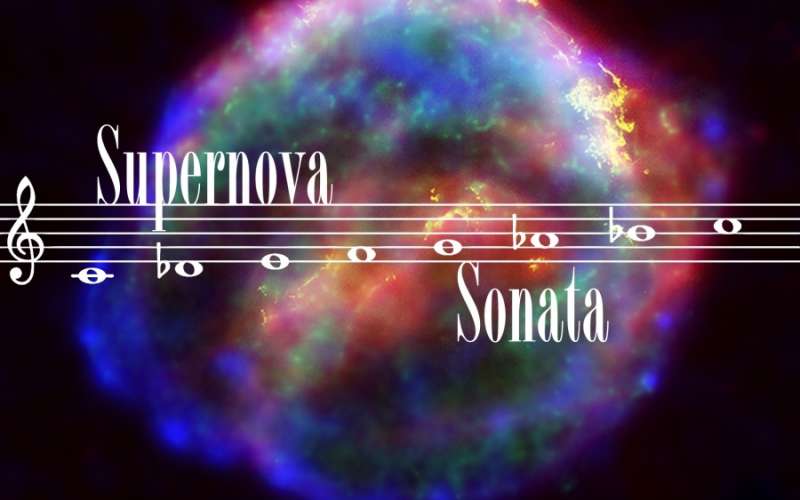
|
Credit & Copyright: Alex H. Parker
(Univ. Victoria),
Melissa L. Graham (Univ. California, Santa Barbara /
LCOGT)
Explanation:
To create a sonata from supernovae, first you have to
find the supernovae.
To do that composers Alex Parker and Melissa Graham
relied on the
Canada France
Hawaii Telescope (CFHT) Legacy Survey
data of four deep fields on the sky
monitored from April 2003 through August 2006,
adopting 241 Type Ia supernovae.
Enchanting to
cosmologists,
Type Ia
supernovae are
thermonuclear explosions that destroy white dwarf stars.
Then, they gave each supernova a note to play,
the volume of the note determined by the distance to the supernova.
Fainter, more distant supernovae play quieter notes.
Each note's pitch was based on a
stretch factor
measured by how fast the supernova brightens and fades over time
relative to an adopted standard time history.
Higher stretch factors play higher notes in
pitches drawn from the illustrated
Phrygian
dominant scale.
Of course, each supernova note is played on an instrument.
Supernovae in massive galaxies were assigned to a stand-up bass, while
supernovae in less massive galaxies played their note on a grand piano.
Click on the image or follow these links
(Vimeo,
YouTube)
to watch a time compressed animation of the
CFHT Legacy Survey data while
listening to the Supernova Sonata.
|
January February March April May June July August September October November December |
| |||||||||||||||||||||||||||||||||||||||||||||||||||||||
NASA Web Site Statements, Warnings, and Disclaimers
NASA Official: Jay Norris. Specific rights apply.
A service of: LHEA at NASA / GSFC
& Michigan Tech. U.
Based on Astronomy Picture
Of the Day
Publications with keywords: supernova
Publications with words: supernova
See also:
- APOD: 2025 July 31 Á Supernova 2025rbs in NGC 7331
- APOD: 2023 October 11 Á NGC 1097: Spiral Galaxy with Supernova
- APOD: 2023 July 9 Á Doomed Star Eta Carinae
- APOD: 2023 May 22 Á Supernova Discovered in Nearby Spiral Galaxy M101
- Supernova Cannon Expels Pulsar J0002
- SN Requiem: A Supernova Seen Three Times So Far
- NGC 7814: Little Sombrero with Supernova
